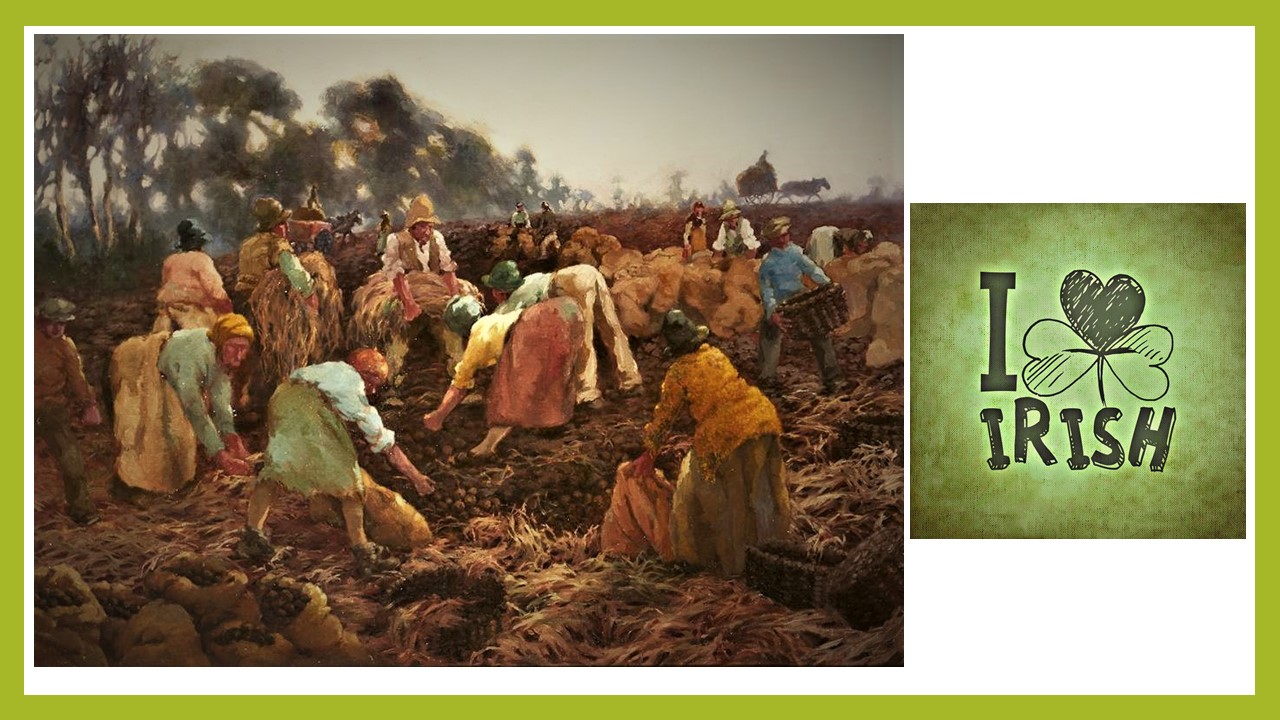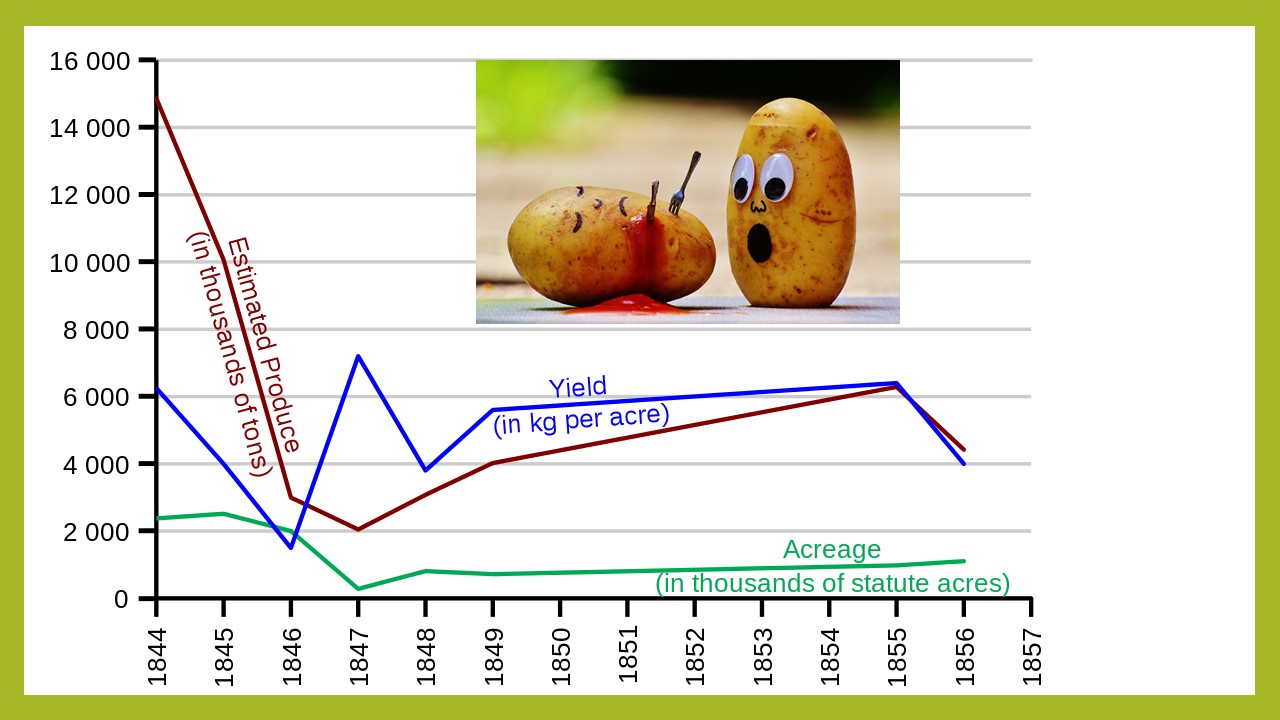Great Famine (Ireland)
On Sale
$0.00
The Great Famine or the Great Hunger,
was a period of mass starvation and disease in Ireland from 1845 to 1849. With the most severely affected areas in the west and south of Ireland, where the Irish language was dominant, the period was contemporaneously known in Irish as An Drochshaol, loosely translated as the "hard times" (or literally, "The Bad Life"). The worst year of the period was 1847, known as "Black '47". During the famine, about one million people died and a million more emigrated from Ireland, causing the island's population to fall by between 20% and 25%.
The event is sometimes referred to as the Irish Potato Famine,
mostly outside Ireland. The proximate cause of the famine was a natural event, a potato blight, which infected potato crops throughout Europe during the 1840s, also causing some 100,000 deaths outside Ireland and influencing much of the unrest in the widespread European Revolutions of 1848. From 1846, the impact of the blight was exacerbated by the Whig government's economic policy of laissez-faire capitalismLonger-term causes include the system of absentee landlordismand single-crop dependence.
This slideshow (74) slideshow pages.
was a period of mass starvation and disease in Ireland from 1845 to 1849. With the most severely affected areas in the west and south of Ireland, where the Irish language was dominant, the period was contemporaneously known in Irish as An Drochshaol, loosely translated as the "hard times" (or literally, "The Bad Life"). The worst year of the period was 1847, known as "Black '47". During the famine, about one million people died and a million more emigrated from Ireland, causing the island's population to fall by between 20% and 25%.
The event is sometimes referred to as the Irish Potato Famine,
mostly outside Ireland. The proximate cause of the famine was a natural event, a potato blight, which infected potato crops throughout Europe during the 1840s, also causing some 100,000 deaths outside Ireland and influencing much of the unrest in the widespread European Revolutions of 1848. From 1846, the impact of the blight was exacerbated by the Whig government's economic policy of laissez-faire capitalismLonger-term causes include the system of absentee landlordismand single-crop dependence.
This slideshow (74) slideshow pages.













